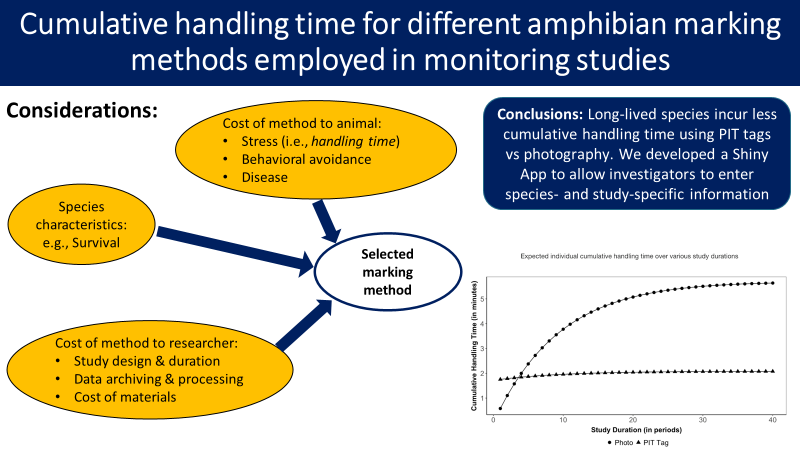Trade-offs in initial and long-term handling efficiency of PIT-tag and photographic identification methods
Abstract/Summary
Individual identification is required for long-term investigations that examine population-level changes in survival or abundance, and mechanisms associated with these changes in wild populations. Such identification generally requires the application of a unique mark, or the documentation of characteristics distinctive to each individual animal. To minimize impacts to often declining populations, scientific and ethical concerns encourage marking strategies that minimize handling time (i.e., stress) for captured individuals. We examined the relative efficacy of passive integrated transponder (PIT)-tagging and photo-identification to identify individual Boreal toads (Anaxyrus boreas boreas) in field and indoor settings. We evaluated whether initial handling time was influenced by identification method (PIT-tag or photo-identification) or environment (field or indoor) and assessed the applicability of each method in long-term monitoring programs. Initial handling time was higher for PIT-tagging than photo-identification and higher in the field than in an indoor environment; however, handling time for previously PIT-tagged individuals was greatly reduced such that photo-identification led to > 5.5 times more handling time than PIT-tagging over the course of a toad's lifetime. Investigators must determine the trade-off between initial and subsequent handling times to minimize the expected cumulative handling time for an individual over the course of a study. Cumulative handling time is a function of the study design and the species’ survival and detection probabilities. We developed a Shiny Application to allow investigators to determine the identification method that minimizes handling time for their own study system.
Publication details
| Published Date: | 2021-07 |
| Outlet/Publisher: | Ecological Indicators |
| Media Format: |
ARMI Organizational Units:
Rocky Mountains, Southern - BiologyTopics:
Monitoring and Population EcologyPlace Names:
ColoradoWyoming
Keywords:
amphibiansconservation
mark-recapture
methods

